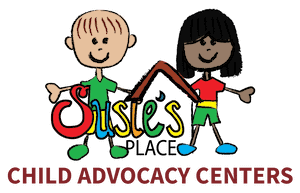Life would be easier if there was a step by step list for raising children. Every parent’s dream would be a handy checklist: “Complete the following and your children will be safe, happy and successful.” Unfortunately, the reality is much more difficult. There are a million small decisions we as parents make daily that can affect our children’s lives, and we are left with no guidebooks or maps. However, at Susie’s Place, we are working to share preventative measures and information that parents can use toward ensuring their children’s safe and secure future.
The following is a list of apps that continuously show up on danger lists for teens and tweens. Please take a moment to familiarize yourself with these potentially dangerous apps and then educate your children on the dangers that lurk online.
Meeting Apps – Tinder/Blendr/Down
Tinder and Blendr are dating apps that connect users for “dates” based on physical proximity. Both use GPS technology to find users’ locations and suggests meeting real life meetings based on proximity. While they claim to be designed for adults, Tinder has a 13-18 year-old section. Moreover, these apps and others that work in the same manner have no verification of age to ensure those on the sites are truly the ages listed. Down is an app that works in tandem with Facebook profiles. This app used to be called Bang With Friends, and sorts your Facebook contacts based on who is “down for a hook up.” The promotion of the hook up culture spreads the idea to teens and tweens that sexual encounters are as common as a tweet or a text message, and it encourages those “down to hook up” to act on that designation.
Chatting Apps – Omegle/ChatRoulette/Kik
Omegle is a video chatting app that connects users with strangers. Despite the proclaimed 18 and over age limit, there’s no age verification and users enter chats with no moderation or supervision. All video streaming is live and there are no barriers to what can be shown. Chat participants are only identified as “You” and “Stranger” propagating the idea that this app is solely devoted to communicating with strangers. ChatRoulette conversations work similarly to Omegle, but can be recorded. Anything that your teenager does or says can be at the fingertips of the stranger they are communicating with and that recording can be shared. Kik is a popular text messaging service. Kik users sign up with an email address and then have access to message any other Kik user. There is no restrictions or approval process. This app will allow for any user to communicate with any other user. They essentially open a virtual door into your home and your child’s life.
Bullying Apps – Whisper/Yik Yak/Ask.FM
These apps can be used to anonymously bully other people. However, some of these apps are connected to GPS software that will narrow down the location of the unnamed victim leaving little question as to the intended target and spreads the message/photo to all other users in that geographic area. While these apps are not physically connecting people, it is an anonymous forum to post horrible things about other people either as a message, photo or question to be answered. Several teen suicides have been linked to these types of apps and the psychological ramifications of being a victim of cyberbullying.
Disappearing Apps – Snapchat/Poof
Arming teens and tweens with the idea that something is going to disappear immediately after it is seen is as dangerous as it comes. Teens and tweens are sending photos with reckless abandon. While you identify the recipient from your contact list rather than a random stranger, there are several ways that recipient can hold onto the message or photo. The data can easily be transferred from the app to a computer, thus giving the receiver many possibilities to recover the images and share them. In addition to content disappearing apps, there are also apps like Poof that allows users to make other apps “disappear” on their phone. Kids can hide any app they don’t want you to see by opening Poof and selecting other apps.
Sadly, as is the way with all technology, this list of apps will soon be outdated. These apps will be replaced with new ones that intrigue and entice our children. The most effective way to protect children is to educate them on the consequences, not of just these specific apps, but of communicating with strangers, sharing personal photos, especially explicit ones, and bullying. These apps can open the door for dangers, but it is a lack of education and understanding that makes our kids walk through it.


